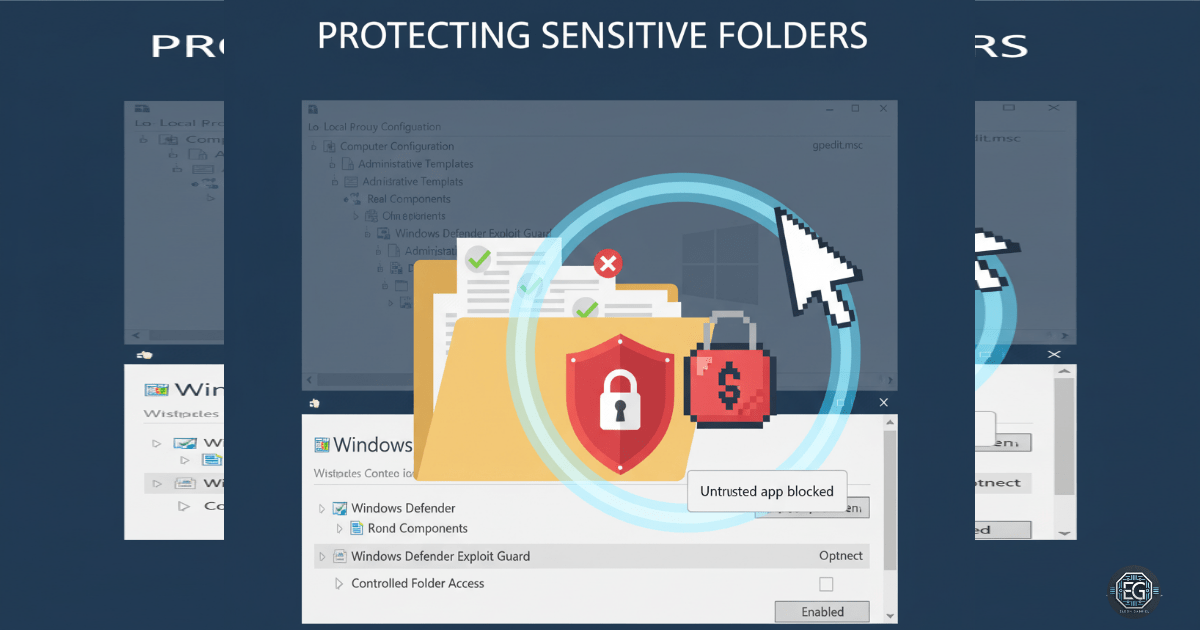Exercise Core Function
In this exercise, I set up Controlled Folder Access (CFA) on a Windows 10 machine using Local Group Policy to protect against ransomware. I enabled CFA, selected folders to protect, and allowed certain applications for trusted access. This setup requires Windows Defender Antivirus for real-time protection. I used gpedit.msc and security settings for CFA, testing both trusted and untrusted applications to ensure functionality. This provided practical experience in endpoint security and system hardening.
What I Learned
I learned how to protect folders from ransomware and other unauthorized changes. Testing showed that untrusted applications could not modify protected folders, while trusted applications could. The exercise demonstrated the need to verify settings and understand exceptions for normal workflows. Troubleshooting reinforced the importance of correctly configuring folder paths and trusted applications to avoid operational issues.
Why It Matters
Controlled Folder Access helps protect against ransomware, a common enterprise threat. By restricting write access to sensitive folders, risk is reduced and compliance with organizational security policies is supported. This exercise highlights the importance of proactive endpoint protection to defend against real-world threats.
How It Maps to the Job / Framework
This exercise develops skills for Endpoint Security Administrators and Cybersecurity Operations Specialists, aligning with the NICE Protect and Defend and ASD Cyber Skills frameworks. These skills are directly applicable to roles requiring protection of critical data and secure configuration management.
Key Takeaways
- Setting up Controlled Folder Access strengthens protection against ransomware and unauthorized access.
- Selecting the right folders to protect and applications to allow ensures smooth operation.
- Working with Local Group Policy and Windows Defender Exploit Guard builds practical security skills.
- Testing confirms that security controls function without disrupting normal workflows.
- Documenting and verifying CFA settings provides audit-ready evidence of compliance and risk management.


